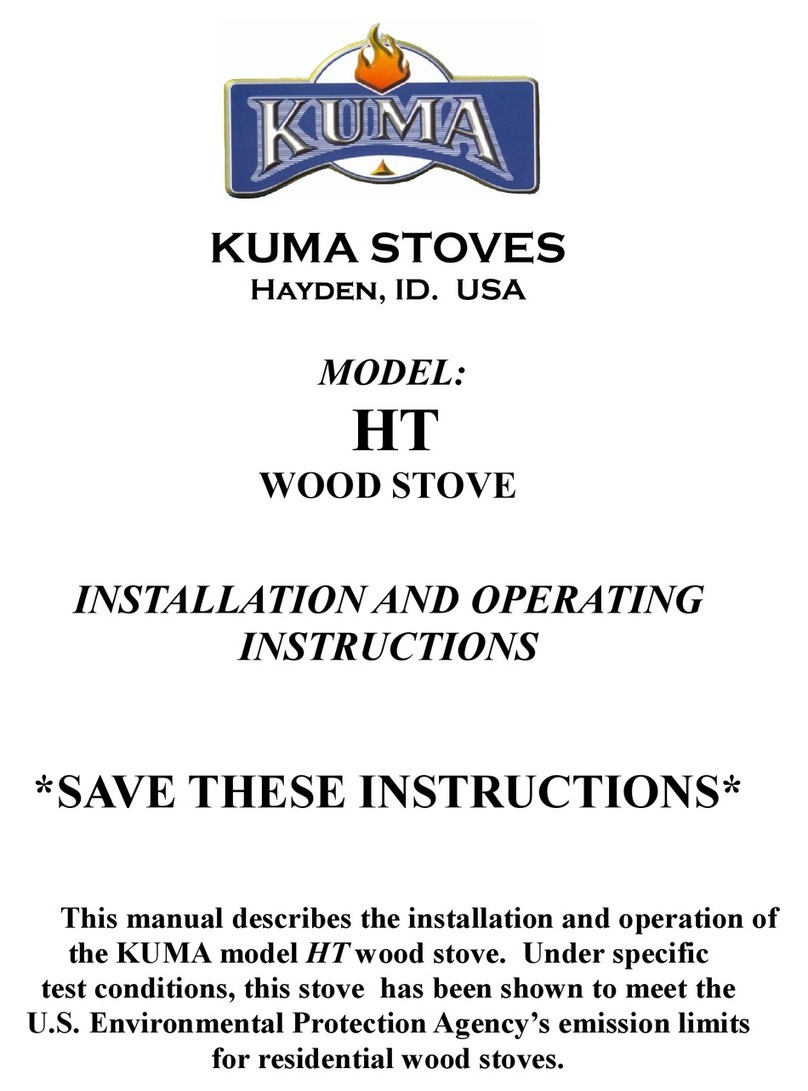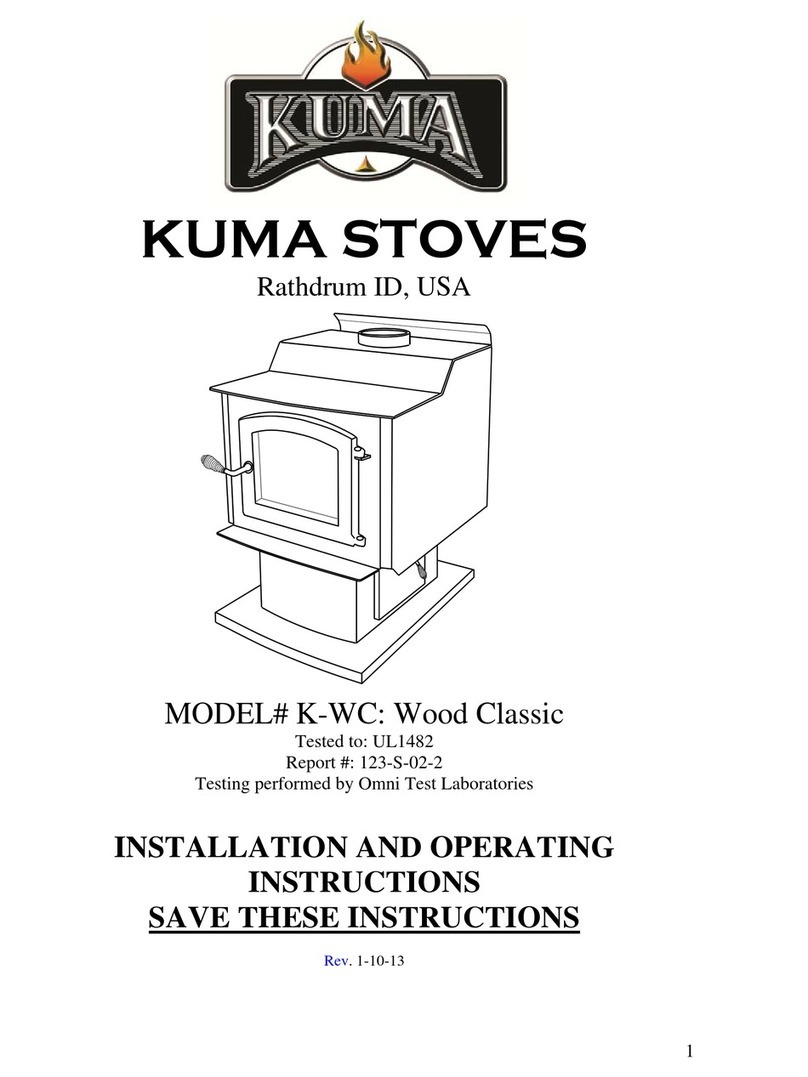MOBILE HOME INSTALLATION INSTRUCTIONS
Model: Wood Classic
CAUTION: THE STRUCTURAL INTEGRITY OF A MOBILE HOME FLOOR, WALL, AND CEILING/ROOF
MUST BE MAINTAINED.
CAUTION: DO NOT INSTALL IN A SLEEPING ROOM.
Before you start, ensure that there are no major obstructions (i.e. floor joists, ceiling joists, electrical
wires, heat ducts, plumbing, etc.).
Clearance: backwall– 6”, corners– 4”, sidewall– 14” (using HT-Type listed chimney and double-wall
connector). See figures 5 and 6. Consult your local building official and build your hearth pad to local building
requirements.
Typical hearth pad (see example: typical hearth pad on page 3)- 16” to front of unit, 6” to sides (hearth top
must be non-combustible).
Material required for installation: 4” outside air duct with screen, caulking to seal roof flashing,
assorted nails and screws, 8-gauge ground wire, 3/8 lag bolts to fasten stove to the floor (length will depend upon
hearth thickness)
Tools required: saber saw, screwdrivers, measuring tape, pencil, plumb line, electric drill and assorted
bits, tin shears, knife, pliers, hammer.
1. After locating possible obstructions (joists, pipes, etc.) and taking into account the necessary combustible clearances (fig.2),
position the stove in the intended installation position. Use a plumb line to locate the position of the ceiling hole for the
chimney. Size the chimney hole to the recommended manufacturer’s clearances for your chimney. Mark the hole.
2. Mark a pencil outline around the base of the stove. Move the stove out of the way.
3. Mark with a pencil the holes to be drilled to fasten the stove to the floor, then mark with a pencil a hole for the fresh air
intake. This hole may be positioned anywhere under the stove. For your convenience, an outside air kit (part # 4OAVK) is
available through your dealer.
4. If ceiling and floor are clear of all obstructions, cut out the holes (NOTE: Do not cut ceiling trusses).
5. In case of attic space use a plumb line to locate the hole in the roof. Cut out the opening, keeping in mind the chimney
manufacturer’s recommended clearances.
6. Install the outside air duct to the floor using screws or nails. Ensure that your air duct has a screen or mesh to keep out
rodents, etc. Air ducts must be at least 4” diameter.
7. Install a hearth pad 18” in front of the unit, 6” to the back, 6” to the sides according to local building codes or manufacturer’s
specs (see applicable figures– corner or straight wall).
8. Position the stove on the hearth and lag bolt the stove to the floor. Ensure that your lag bolts fasten securely to the floor of
the mobile home.
9. For a list of typical chimney pipe parts, see figure 2.
10. Check all chimney pipe for damage. Do not use any damaged pipe. Installation procedures may vary from manufacturer to
manufacturer of listed chimney. Install the chimney up through the hole in the ceiling and roof, observing pipe manufacturer’s
minimum clearance to combustibles.
11. In cases where there is attic space, install a protective joist shield tube or box. Consult local building officials or chimney
manufacturer.
12. Install the roof flashing, sealing water tight. Install the storm collar and seal water tight. Install chimney cap. NOTE:
Refer to chimney manufacturer’s specs. Chimney height, see figure 7. Minimum for mobile home is 9 1/2’ above stove.
13. Install double-wall stove pipe connector from the stove to the chimney pipe, making sure to secure all joints of pipe
together as well as the pipe to the stove flue collar with three sheet metal screws at each joint.
14. Call for final inspection.
15. INSTALL AND USE IN ACCORDANCE WITH THE MANUFACTURER’S INSTALLATION AND OPERATING
INSTRUCTIONS ONLY. WHILE MOST ANYONE WITH BASIC CARPENTRY SKILLS CAN SUCCESSFULLY AND
SAFELY INSTALL THEIR KUMA MODEL WOOD CLASSIC WOOD STOVE, IT IS HIGHLY RECOMMENDED THAT
IT IS INSTALLED BY A QUALIFIED PROFESSIONAL WHO IS PROPERLY TRAINED AND LICENSED–
PREFERABLY AN NFI CERTIFIED (NATIONAL FIREPLACE INSTITUE) EXPERT.
YOUR STOVE IS NOW READY FOR USE. REFER TO OPERATING INSTRUCTIONS.






























